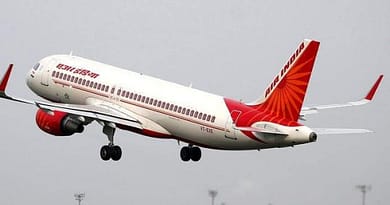Rain Causes Airbus A220 Engine To Shut Down
Transport Canada has issued an airworthiness directive recently for operators of the Airbus A220 on an in-service A220 engine shutdown incident while taxiing.
What Happened?
An Airbus A220 suffered an engine shutdown incident while taxiing recently. The problem occurred with rainwater dripping into the forward avionics bay. Operators of the A220 are to comply with the Directive in 12 months to continue to operate in Canada.
An investigation found that water dripped into the avionics bay causing a short circuit, tripping a circuit breaker that led to an engine shutdown. This happened while the aircraft was taxying during a rainstorm.
Watch this video to know why the AIRBUS A220 could be the Perfect Aircraft in the future.
Remedial Measures
The Airworthiness Directive mandates A220 operators to install ‘Blanking Plates’ on drains to prevent water from entering into the avionics bay. The existing forward galley slotted drain covers need to be replaced with solid blanking plates to block the drain tubing.
Canada is a crucial manufacturing hub and market for Airbus and also the home of the Airbus A220 program. The final assembly line of the aircraft is located at Mirabel, near Montreal.

Tracing the A220 program
The Airbus A220 is a family of narrow-body, twin-engine, medium-range jet airliners.
The A220 has two variants as per its passenger capacity. The variant with 108 to 133-seats (A220-100) first entered service on in 2016 with Swiss International Airlines. The slightly larger version with 130- to 160-seat A220-300 first flew commercially with AirBaltic also in 2016.
The A220 program got off to a slow start with Bombardier but has caught steam ever since the transfer to Airbus, as there is a preferred market for smaller, fuel-efficient, regional jets like the A220.
The A220 has gone on to sell well and prove popular with passengers and airlines alike. However, there have been some engine issues. Four of these were attributed to the failure of the low-pressure compressor. The FAA had issued an Airworthiness Directive concerning the A220 earlier this year after these incidents.
In 2018, Montreal-based Bombardier transferred control of the A220 program to Airbus Canada Limited Partnership. The Government of Québec owns a 25% share in the program, with Airbus having the rest 75%.

Air Canada operates 8 A220s and is planned to increase the number to 45 aircraft. Photo: Airbus
Design Features
The aircraft contains 70% advanced materials comprising 46% composite materials and 24% aluminum-lithium. Bombardier claimed an overall 15% lower seat-mile cost, 20% lower fuel burn and a CO2 emissions advantage, a 25% reduction in maintenance costs, and a four-fold reduction in the noise footprint compared to existing production aircraft.
Bombardier claimed the engine and the wings would save up to 20% fuel compared with the Airbus A320neo and the Boeing 737NG with which it competed at the time of manufacture. The larger variant of the A220 was 6 tonnes lighter than the Airbus A319neo and nearly 8 tons lighter than the Boeing 737 MAX 7, helping it to achieve up to 12% operating cost savings and 15% with the current models.

Future Growth Expectations
The A220 program has the potential to provide serious competition to other players like Embraer in the highly competitive regional-jet market.
Other airlines that operate the aircraft are Delta Airlines, Korean Air and JetBlue.
Air Canada operates eight A220s and is planned to increase the number to 45 aircraft. Both Airbus and Air Canada are confident of the usability and the employability of the aircraft as a fuel-efficient short-haul regional jet.
As of July 2020, the program has 118 aircraft delivered to vendors with 642 total orders received worldwide.
What do you think of the A220? Let us know in the comments.




